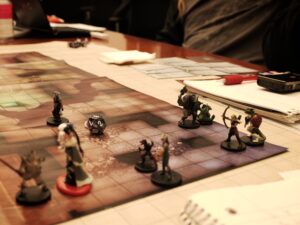When I posted the Ultimate X-Matrix for your Agile Transformation, it was only an example because strategy is always contextual. The whole point of Strategy Deployment is that there are no pre-determined answers. Therefore, we cannot simply pre-define and implement transformation tactics.
Having said that, I have recently come around to the idea that I can describe something at a high level of abstraction which could be useful for Lean and Agile transformations.
Typology
I have previously written about Agility as a Strategy itself, with some slightly more granular possibilities. Additionally, I can imagine my earlier Kanban Thinking impacts of Flow, Value and Potential also being used as strategies. I may come back to that in a future post.
However, I have previously thought that Tactics would be too specific to define. That has changed and I now believe that there is a typology that can be used to explore tactics. I’m using typology in a specific way that Dave Snowden uses and describes well in his recent Cynefin St. David’s 2023 post. That is that typologies “stimulate people to think more broadly” as opposed to taxonomies which encourage “classifying things into types”.
The typology of tactics I have come up with is as follows:
- People – related to roles or leadership
- Plexuses – related organisational structures or networks
- Processes – related to workflows or methods
- Practices – related to techniques or skills
- Products – related to customer or market deliverables
- Platforms – related to enabling tools or technologies
Diads
That gives us 6 P’s, which can also be combined into related pairs.
- People and Plexuses
- Processes and Practices
- Products and Platforms
As a result, we can use those pairs as the extreme ends of diads with which we can capture a range of possible tactics. There are two ways I can imagine describing these diads.
- More business focussed through to more technical focussed
- More social focussed through to more technical focussed (e.g. a socio-technical lens)
Neither of those is a perfect fit and I suspect I’ll need to see how that develops over time.
Usage
Using the typology in pairs like this means that we can lay out the 6 P’s relative to each other, and then start identifying tactics and laying them out relative to those types. I can imagine doing this using Hexis, and possibly even as an alternative input into Estuarine Mapping to decide what tactics are worth experimenting with, and what might be worth avoiding.
Note that this is all theoretical at the moment. I’ve not used the typology in anger yet, let alone explored its application as part of any larger facilitated exercises. However, it is something I do want to try and wanted to put it out here to get any feedback or comments. Let me know in the comments below, or via the usual other channels.

